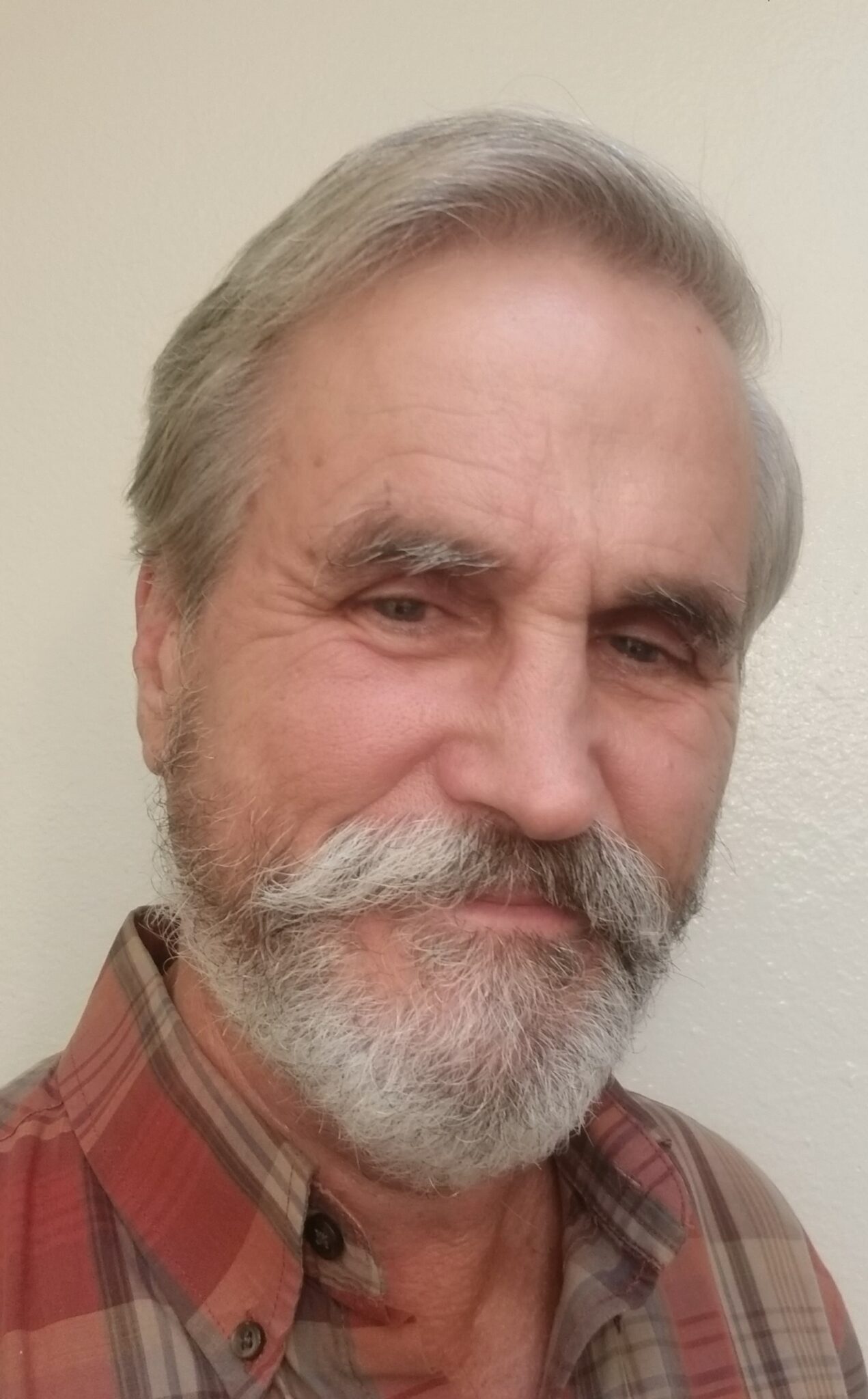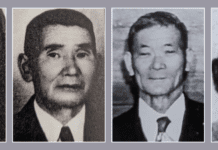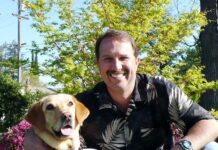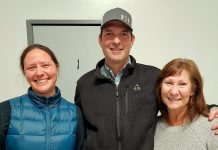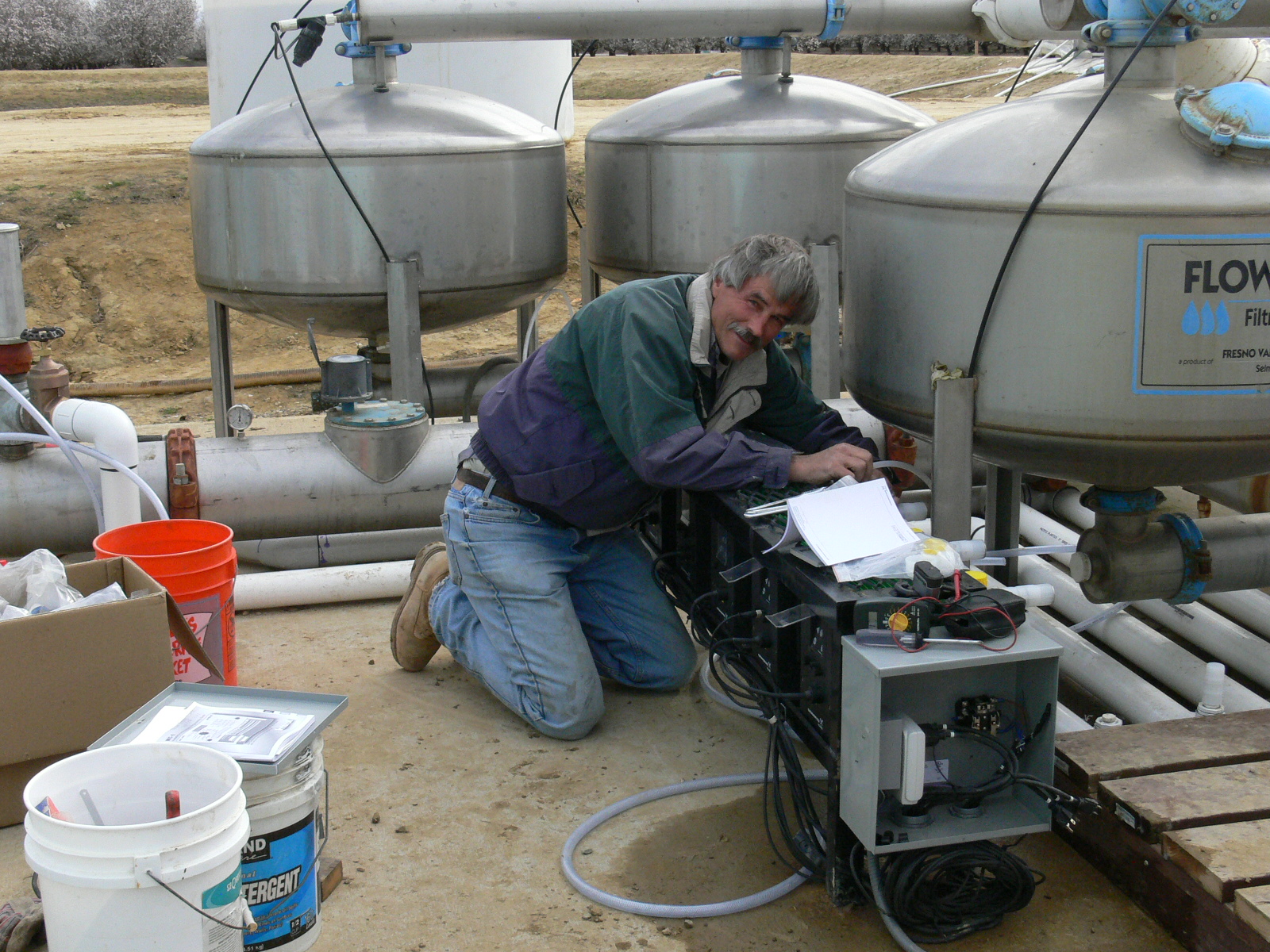
Blake Sanden, UCCE Irrigation & Agronomy Farm Advisor Emeritus, Kern County, followed a unique path to a career in agriculture. His first foray into ag started when he was a teen in the 1970s, growing up as the quintessential tanned, long-haired beach bum in San Diego. The first crop he ever grew consisted of six plants that just recently became legal.
When he and his two friends graduated high school, they geared up for a 14-day backpacking trip in the Sierra Nevada. On their last day in a surprisingly empty Yosemite, Sanden and his friend hiked the back of Half Dome. When Sanden reached the summit, he was taken by surprise.
“I had always loved the mountains. Something just always sparked a sense of awe,” said Sanden. “But that day, standing at the top of Half Dome and looking down, I felt absolutely nothing.”
A few days later, he landed in the middle of an ex-biker gang Bible study that introduced him to Jesus. He hitchhiked to the northwest, and later to Texas, while he slept in drainage pipes and underneath railway trestles. He cut wheat and fixed combines with “roughnecks.” He eventually enrolled in CSU San Diego, where he met a young woman whom he followed to Connecticut, stayed with her family and got a job working in a local greenhouse, where he enjoyed being around plants.
One night, while Sanden was watching television with his then-girlfriend’s father, they saw a commercial showing children in Africa, starving and with swollen stomachs.
“Her dad turned to me and said, ‘What are you going to do about that?’” said Sanden. “Her dad was just digging into me, because I still looked like the long-haired beach bum San Diego hippy, but insisted that real Christian love was meant to help those in need. I was a month shy of 21 years old, and I knew I had to do something.”
It didn’t work out with his romantic interest, and Sanden returned home, walked into the UC San Diego admissions office and asked if there was an agriculture school in the UC system. He knew nothing of UC Davis, but Sanden flipped through the UCD catalog given to him and randomly pointed, landing on International Agriculture Development. He sent in an application five months after the deadline. He was accepted and double majored in international agriculture development and agronomy.
Making a Difference
After graduating, Sanden married another UCD Aggie. They went on to spend three years in Zambia, Africa working on a development project, where he helped the locals with corn, ground nuts and hand-bucket irrigated vegetable gardening. When he arrived, the area’s diet depended very heavily on fish and cassava, with no vegetable gardens available nearby. With daily wages as low as $2 a day, that was enough for locals to catch or buy a fish, but not an onion or tomato, which could cost as much as 50 cents apiece if they could find one.
The project established some small health clinics in various fishing camps and villages around Lake Mweru Wantipa, literally translated “water of mud”. Sanden developed garden clubs for subsidizing the cost of seeds, sprayers and other equipment. By the time he left Africa, Sanden estimates there was roughly a $300,000 annual homegrown vegetable crop production in the Kaputa District of Zambia that wasn’t there when he first arrived.
This helped expand primarily the staples of cassava, maize, rice and dried peanuts. It also drew Sanden to another complication: water.
Cassava root, the main staple in that area, contains high levels of cyanogenic glucosides, which makes it naturally pest resistant, but also requires soaking to help remove the glucosides so the food is safe for human consumption.
“Someone would be soaking their cassava, and down creek there’s someone drawing water to drink. In between, there could be someone washing dirty diapers,” said Sanden.
In one garden area – irrigated by bucket from a hand-dug shallow well – the plants initially grew well, but without testing equipment, Sanden didn’t realize the too-high sodium content of the water. The tomato vines and all leafy vegetables died from leaf burn after six weeks.
His experience in Africa took him back to UC Davis, where he earned an MS in irrigation and drainage water science and engineering.
Sanden encountered limited job prospects as a post-graduate researcher. When he landed his job as an irrigation scheduling manager, he had never before farmed almonds. He managed irrigation for 24,000 westside acres belonging to Paramount Farming (now The Wonderful Company), and really got a taste for irrigation demand in almond and pistachio.
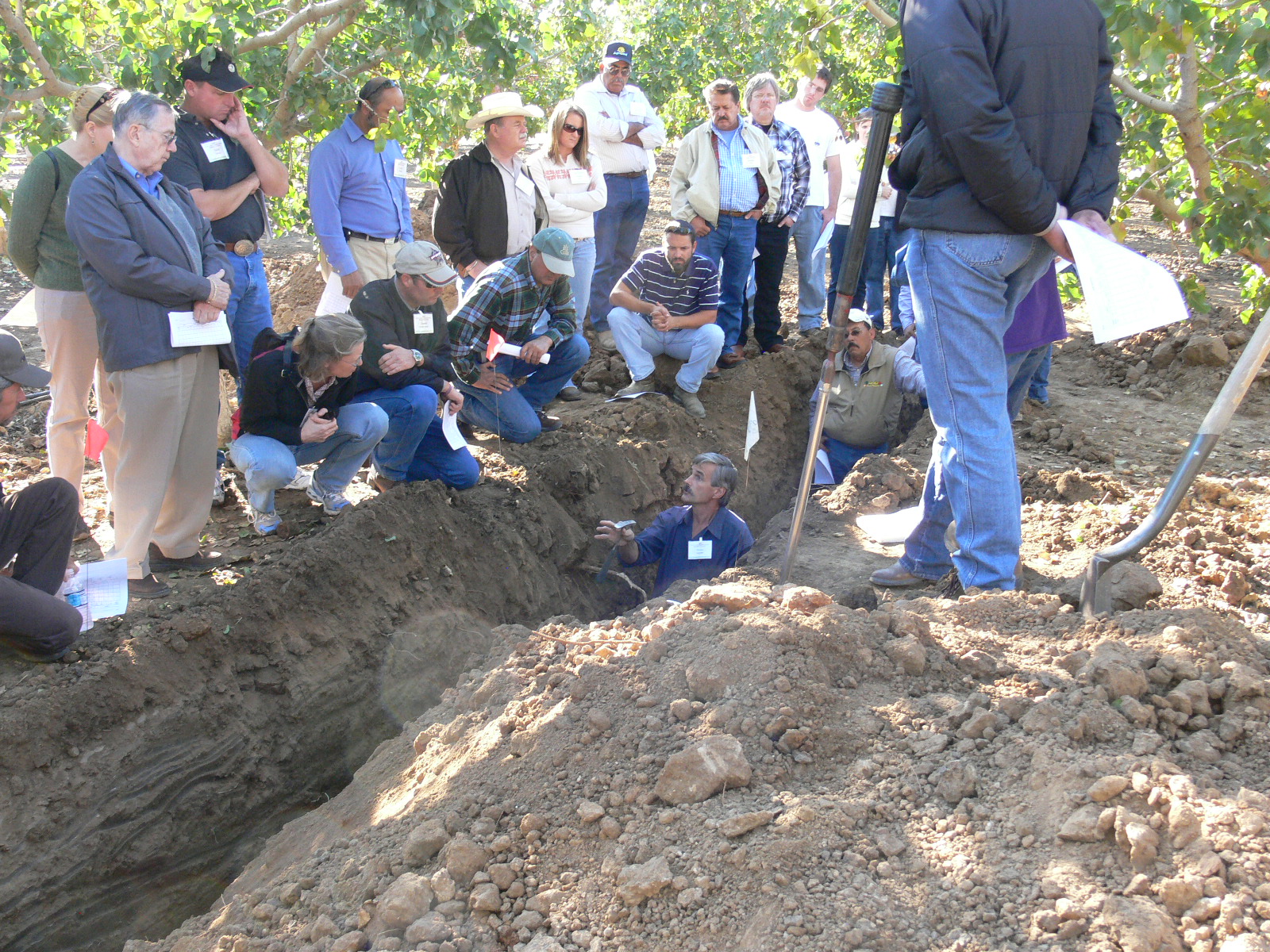
Improvements for Yield Success
Some of the biggest changes over the course of Sanden’s career have been fundamental to the success of improved almond yields.
“The number-one thing was coming to an understanding that the irrigation crop coefficients everyone used in the 60s, 70s, 80s and early 90s were not right for the San Joaquin Valley. Growers would tell me that trees naturally defoliate during harvest,” said Sanden. “Yes, trees that are starving for water will do that.”
Growers used to ignore tree stress during harvest. Water would be cut at the end of July to early August, Nonpareils harvested first and then the pollinator varieties, leaving trees without water for six to eight weeks. There were not yet numbers informing growers that almonds could use 50 to 55 inches of water, and his constant touting of water stress earned Sanden the nickname “Swampy” with his crop managers.
“The equipment guys ruled the roost back then, not the water guys,” he said.
The early adopters of microsystems were savvy farmers who looked closely at their trees, giving a shot of water to the Nonpareils just after harvest, and before harvesting the pollinators. This was a significant concept (later proven in field trials by Dave Goldhamer) that boosted almond yields to more than 2000 lbs/ac – much more than the rolling California average of 1300 to 1500 lbs/ac at the time.
Sanden also counts himself fortunate to have been the ‘plumber’ for the Patrick Brown research field trials proving the high potassium demand of almonds, causing growers to become more active in potassium fertigation. Almost-universal potassium fertilization, minimizing postharvest stress and establishing the high yield/water use/ET potential are the biggest things Sanden has seen in almonds come about during his tenure. His other major achievement was helping to establish the salinity tolerance of pistachios.
The Value of Light
The improvements in orchards, however, are well on their way to bigger changes. As Sanden likes to remind growers, it takes good soil and high ET to get top yields. But as industry pushes for yields, and with SGMA and other regulations helping to shape the orchard of the future, there’s one resource that isn’t being maximized – light.
“The trees on the ends of the row have higher yields because they get light all the way around,” explained Sanden. “If we have to retire acreage due to SGMA, let’s plant orchards doing the opposite of what we’re doing now.”
Instead of narrow planting at 20 to 22 ft row spacing, Sanden suggests doubling that, utilizing drip and maintaining current density down the row. Water could essentially be cut in half for the young orchard. Mature (>seventh leaf) orchard ET would probably be 60 to 65% of the full canopy cover ET. The decrease in trees would reduce yield a bit, but Sanden thinks that the tradeoff would be worth it.
“Growers could probably get about 75% of the full-cover yield because of more light on the spurs, use less water, create less humidity and probably save one or two fungicide sprays,” said Sanden.
Not only that, but nuts would dry quicker, reducing possible bacterial growth such as salmonella. Growers would have more room to blow nuts farther away and to bring back a more timely application of water after shaking. There would also be more room to push salts to the middle of the drive out of the drip rootzone.
“Wider spacing is more efficient,” said Sanden. “If we’re going to do this water sustainability thing, the only resource we’re not using to the fullest is light.”
Just a couple of years ago, Sanden wrapped up his nearly four-decade run in almond and pistachio irrigation, where he says he got to pick the “low hanging fruit” of ET and fertility management that allowed for the doubling of tree nut yields. While he admits it has been a wild ride, the rising water costs and decreasing nut prices make him unsure of what’s next for the industry.
“God bless the growers and new crop advisors who are trying to work with these issues,” said Sanden.
